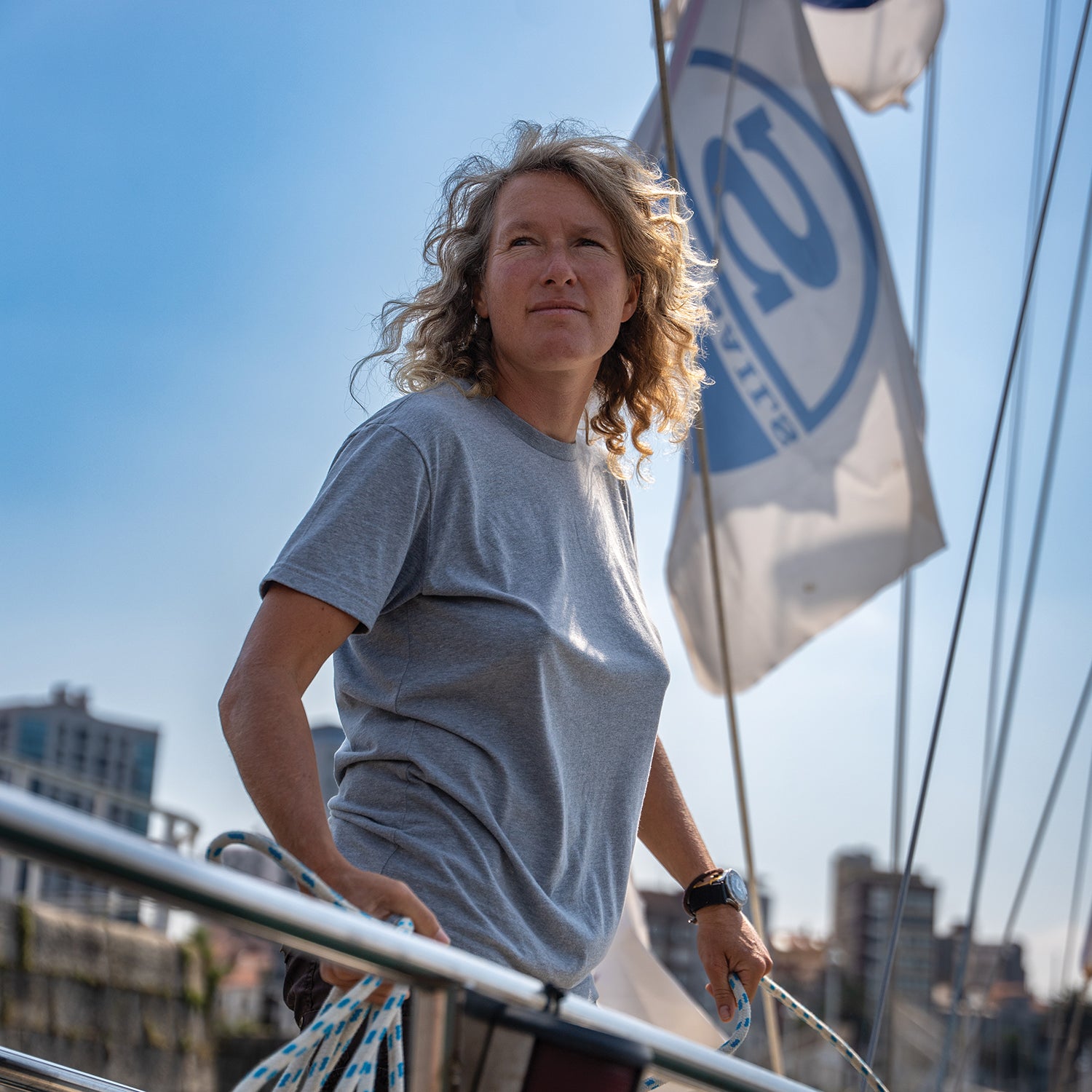When the SOS message beeped on Kirsten Neuschäfer’s satellite device, she was piloting her 36-foot sailboat, Minnehaha, alone through the remote vastness of the Southern Ocean. She was two and a half months into the Golden Globe, an old-school, solo, nonstop sailing race around the world—run without use of most forms of modern technology, a challenge that many in the maritime community consider the greatest in sailing—and she had the lead. Fellow competitor Tapio Lehtinen’s boat had suddenly sunk, leaving the Finnish sailor adrift in a tiny raft far off the tip of the African continent. Neuschäfer changed course, sailed some hundred miles through the night, found the little raft in the huge and heaving ocean, and shared a glass of rum with Lehtinen before safely transferring him to a giant bulk carrier that had detoured from Singapore to help with the search. Then she turned the Minnehaha to the wind and kept racing.
Even after rescuing Lehtinen, Neuschäfer retained the lead in the perilous contest, which ultimately forced 13 of 16 entrants to drop out. When she crossed the finish line in Les Sables d’Olonne, France, on April 27, 2023—after 30,000 miles and 235 days without stepping off her boat—Neuschäfer became the first woman to win a circumnavigation race, crewed or solo, that involves navigating past the three great capes at the bottom of the world.
Neuschäfer, 40, doesn’t like the focus on her gender. She’s prouder that the win made her the first South African to win a round-the-world sailing event. “I think it’s quite a pity that the attention is due to the fact that I’m a woman rather than a sailor,” she told ���ϳԹ���. “I like to be on the playing ground as an equal.”
But the playing ground itself isn’t equal. Historically, women were barred from working on ships, and in our time they remain wildly underrepresented in sail racing, chartering, and sail training, and on superyacht crews. Discrimination still exists; in February, French sailor Clarisse Cremer, who holds the current record for fastest woman to sail solo around the world, was dropped by her sponsor in advance of the 2024 Vendée Globe after she took a break from sailing to give birth to her first child. Race organizers changed the qualifying process, increasing the number of sailing hours competitors needed to complete in the year prior to the event. (She has since found a new sponsor and is working toward qualifying for the race.)
In fact, Neuschäfer doesn’t like the spotlight, full stop. Competitors were required to send daily text message updates for race media, and hers often read merely: text. But she does acknowledge that there are positive aspects to the staggering amount of press coverage she received. “If there are women out there who’ve had a tough time getting into the sailing industry—or any industry that’s male dominated—and they feel, ‘She could do it, maybe I can also pursue my dream,’ then that’s a good thing,” she says.
The coverage has also helped draw attention to the Golden Globe. While other major circumnavigation races—like the Vendée Globe and the BOC Challenge—involve expensive, high-tech boats that race at high speeds, the Golden Globe hearkens back to a simpler era. The inaugural, legendarily disastrous Golden Globe was run in 1968, when nine men vied to be the first to sail solo, nonstop, around the world. Only one man finished the race. The rest sank, abandoned the journey, or, in one harrowing case, slipped into the sea in an apparent suicide. The Golden Globe was revived in 2018 and is run every four years. The course follows the same perilous route as the original: from Europe down the coast of Africa, around Africa’s Cape of Good Hope, Australia’s Cape Leeuwin, and South America’s Cape Horn, returning north along the east coast of South America, and crossing the Atlantic back to Europe. Competitors, who are barred any outside assistance, sail with much the same technology used in 1968, in small boats, navigating with paper charts and sextant, catching rain for water, and communicating by radio.
Neuschäfer likes the Golden Globe because it’s old-school, which makes it more affordable than other sailing races. “It’s accessible to anyone who’s interested in adventure,” says Neuschäfer, a veteran thrill seeker. She cycled the full length of Africa at age 22, riding more than 9,300 miles through jungles and across the Sahara Desert, and sailed National Geographic and BBC film crews to wildly remote locations in the Southern Ocean. When she’s alone in the calm waters of the tropics, she sometimes drops sail and jumps into the ocean, swimming away from the boat “to get that feeling of vastness, that sense of eternity.”
If the buzz around Neuschäfer’s Golden Globe win “inspires people to follow their dreams to whatever degree,” she says, “then it has its worth in that.”


